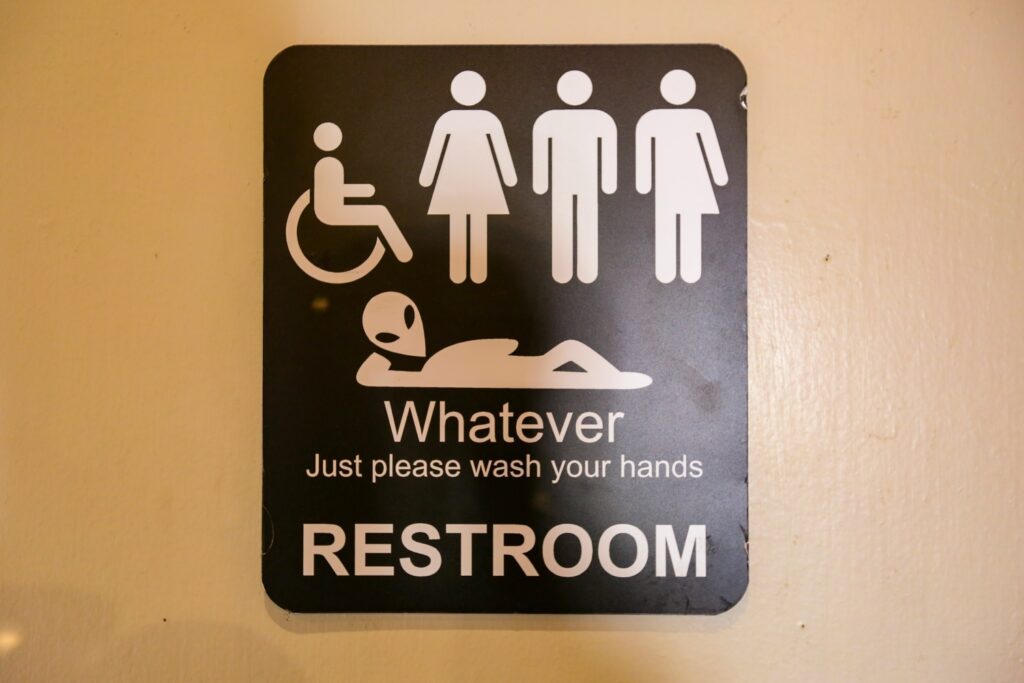Sexism is a prejudice that favors one gender over another. It affects all genders, but women and the LGBTQ+ community experience it more often.
Many of the sexist behaviors may not seem sexist because they show up in hidden biases, unspoken assumptions, and traditions.
So, let us identify the different forms it takes and recognize the harm it causes so that we can be decent human beings in this world.
Sexists Believe That One Gender Is Inherently Superior to Another
Sexists believe that one gender is better, more capable, or more valuable than another. What is that gender? Oftentimes, their gender!
This creates an unequal balance of power, where those who identify with the superior gender feel entitled to dominate or control the inferior.
Masculinity and femininity can be harmful when treated as rigid norms because they limit individual expression.
The problem with this mindset is that it ignores individual abilities.
Not every man is a natural leader, and not every woman wants to be a homemaker. People are much more complex than gender stereotypes allow.

Not All Sexists Are the Same
Not all sexists act in the same way or for the same reasons. Below are the main types of sexism that exist in society today.
Hostile Sexism
Hostile sexism involves direct negativity, anger, or aggression toward a specific gender, so you will know it when you see it.
This can take the form of insults, threats, harassment, or outright exclusion. It openly expresses that one gender is less valuable or competent.
Benevolent Sexism
Benevolent sexism is trickier because it doesn’t sound harmful on the surface. It hides behind compliments or protective attitudes.
For instance, “women are naturally nurturing” may sound positive, but it limits their choices by assuming all of them should be caregivers.
Similarly, telling men they are “naturally strong and brave” might seem flattering, but it pressures them to act tough and never show vulnerability.
This type of sexism is harder to challenge because, how do you argue against something that is framed as a compliment?
Ambivalent Sexism
Ambivalent sexism is when someone holds both negative and seemingly positive beliefs about other genders, because it depends.
Think of this: Women tend to say that all men are emotionally unavailable when talking about their exes, but if you ask them why they are still dating men, “Well, there are still good men out there!”
Double standards are unfair expectations that apply differently to people in similar situations.
It is sometimes supportive, sometimes critical. The person expressing it may not see themselves as sexist at all.
Institutional Sexism
Institutional sexism is built into laws, policies, and workplace practices. It refers to the way entire systems can favor one gender over another.
In many countries, women still earn less than men for the same work, or they are underrepresented in leadership positions.
Some institutions may also have policies that make it harder for fathers to take paternity leave, because childcare is only a mother’s job.
It affects large groups of people at once and often goes unquestioned because it is seen as the way things are. A reform is needed to fix this.

Internalized Sexism
If a woman believes she is not good enough for leadership because she has been told all her life that men make better leaders, that is internalized sexism.
It happens when a person absorbs sexist beliefs and applies them to themselves or their own gender. They may limit their dreams and choices without realizing they are influenced by stereotypes.
It can also lead to hostility within the same gender group, such as when women criticize each other for not living up to traditional femininity.
Some Attitudes, Actions, and Systems Considered Sexist
Sexism shows itself in everyday attitudes and actions, and it has become so ingrained in our lives that we don’t even realize it.
Let us look into some common forms of sexist thinking and behavior.
Believing One Gender Is Naturally Superior
One of the most common sexist beliefs is that one gender is naturally better at certain things, when skills can actually be learned.
This has been used throughout history to justify keeping women out of politics, education, and the workforce.
Assuming One’s Role Based on Gender
For centuries, women have been expected to handle household chores while men have been expected to earn money.
This creates conflict when people step outside of these roles.
A man who wants to stay home with his children may be judged, while a woman who prioritizes her career may be criticized for being unfeminine.
A stereotype is a generalized belief about a group of people that ignores individual differences.
These expectations are unfair because they force people to live according to stereotypes rather than their own preferences and abilities.
Dismissing One’s Ideas Because of Gender
In some workplaces, especially in traditional countries, women’s contributions are sometimes ignored until a man repeats the same idea.
And when men speak up about issues like childcare or gender equality, it may be disregarded because those topics are seen as women’s concerns.
In my current activities, however, I see more women being more outspoken, more intelligent, and more willing to lead. And men don’t see any problem.
But that is not the reality in some other cultures.

Excluding Someone Due to Gender Stereotypes
Exclusion based on gender stereotypes happens when people are left out because they don’t fit the traditional expectations of their gender.
A woman may be excluded from sports because she is “too fragile,” or a man may be excluded from a teaching job because it is “a woman’s profession.”
This limits diversity and keeps stereotypes alive. It tells people they don’t belong, even when they have the skills or interest to participate.
Sexual Harassment or Objectification
Both harassment and objectification strip individuals of their value as people and reduce them to their bodies, excluding the soul.
Even if it is “just a joke,” it has a negative impact on the mental health of the victim. If you haven’t experienced it, you will not understand.
Men violate women sexually due to entitlement and social norms that perpetuate gender inequality and objectification.
I have experienced acts of lasciviousness many times. I always tell my brothers how disgusting those were so that they understand.
Unequal Pay for Equal Work
One of the clearest examples of institutional sexism is unequal pay.
It may not be the case where you are, but it is in other places: Many women are paid less than men for doing the same job with the same qualifications.
This may seem reasonable for institutions, but it sends a message that some people’s contributions are worth less than others.
Not being appreciated diminishes one’s motivation, but they still wonder why their employees leave without a second thought.

Just Because You Have Achieved Equality Doesn’t Mean They Have
As I wrote this article, I was thinking of my mother, who has achieved a lot for the institution where she works. And she is being rewarded fairly for that.
I also saw a glimpse of my future. I was living a good life, with a good career, getting along with the men in my field.
So, I asked myself, “Are there gender inequalities at work? Are women still getting paid less than men?” My initial answer was, “No and no.”
But I expanded my lens, and I saw the situations in other countries. There, women are still oppressed in some way, and I must include them.
Just because we are not affected doesn’t mean that the problem doesn’t exist. The field has leveled in some areas, but not in others.
A world without sexism would allow everyone to choose their paths freely, without fear of judgment or exclusion.
To get there, we need to challenge sexist beliefs wherever we see them, whether in ourselves, in institutions, or in everyday interactions.










